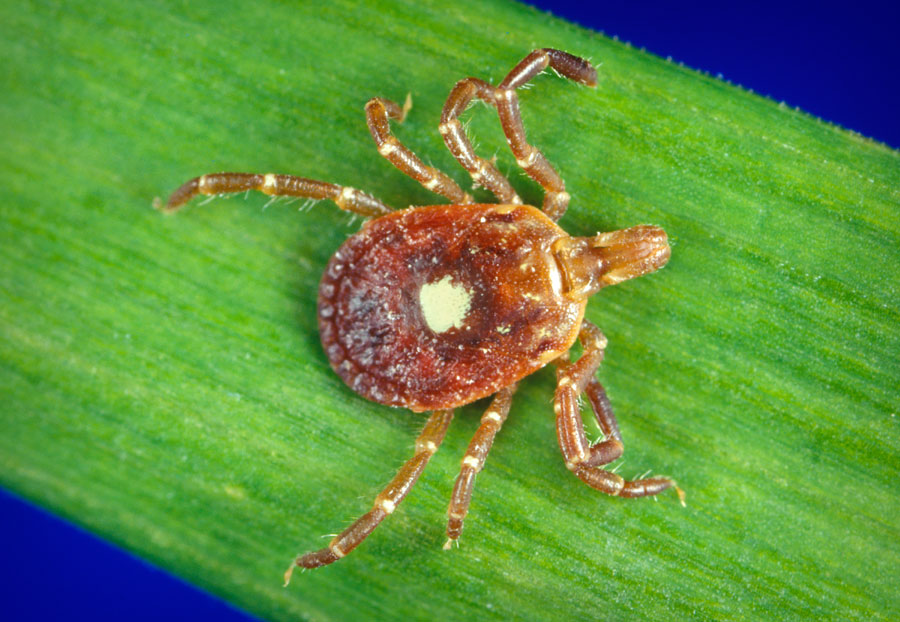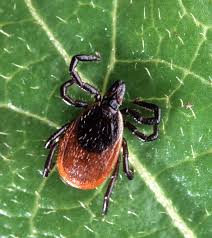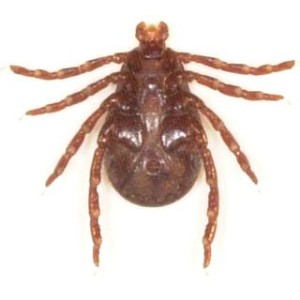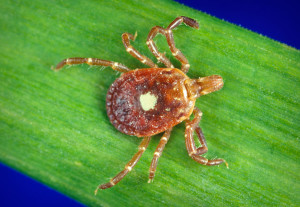Ticks | Three Common Types | Tick Control
Ixodes scapularis | Ticks | Type One Tick | Three Common Types
Ixodes scapularis, also commonly called the deer tick or black-legged tick, is the most important tick in the Northeast in terms of disease potential.
It is a three-host tick species that can live for two years to complete its life cycle. Eggs hatch out in August into 6-legged LARVAE, which look for a small mammal (usually a mouse or ground squirrel) for their first blood meal. If the tick feeds on a mouse that has been infected with Lyme disease, the tick will be infected throughout its life. After taking a complete blood meal — which can take several days — the tick drops off the host animal and goes into the leaf litter to digest its meal and prepare itself for its next molt.
Most scapularis ticks stay in this quiescent state until the following spring, when they emerge in the 8-legged NYMPH stage. The nymphs “quest” for another small mammal for their second feeding, at which time they have another opportunity to pick up Lyme or another disease, or to transmit it to this second host if they had been infected during the first feeding. This is the stage that is most responsible for transmitting disease to us and our domestic animals — mostly because the nymphs start out so small that they are often overlooked or missed while attached. But these small ticks can grow geometrically with time, so what many people believe is “too large to be a deer tick” turns out to be, unfortunately, a deer tick.
After taking their second meal, they again fall to the ground and wait to molt into the adult stage, usually the following autumn. As adults, they actively “quest” for their last blood meal, preferrably from a deer. This strategy allows them the best chance of finding a mate and successfully reproducing. Adults can be found in spring, early summer, fall, and winter. They do not seem to be bothered by extreme cold or snow if there are areas without snow, like under porches or beneath large conifer trees, where there is little snow cover.
Ticks in our neck of the woods (Northeastern PA) have been tested and found to carry four pathogens: Lyme disease (Borrelia burgdorferi), Bartonella (Bartonella henselae), Babesia (Babesia microti) and Ehrlichia (Anaplasma phagocytophila, formerly known as HGE). If a tick has been actively feeding for less than 36 hours, it is unlikely to have transmitted Lyme disease. The other diseases can transmit in considerably less time.
Dermacentor variabilis | Ticks | Type Two Tick | Three Common Types
The American dog tick is one of the most commonly seen and identified ticks on the eastern side of the United States. Its distinctive iridescent scutum (dorsal shield) makes it the only species that can be identified correctly with the naked eye. These ticks are encountered from mid-spring to early autumn, after which time they “disappear” into the environment.
They will attach to humans as well as to dogs, bear, deer and other mammals. Because they are larger than Ixodes ticks, they are easier to spot, and because they are distinctively marked, they are easier to identify. In the Eastern US, they are responsible for most of the transmission of Rocky Mountain spotted fever (Rickettsia rickettsia) and are one of the vectors of tularemia (Francisella tularensis)
Amblyomma americanum | Ticks | Type Three Tick | Three Common Types
Lone star ticks are found in the eastern half of the United States, ranging from Texas to Iowa and along the Atlantic to Maine. Their name comes from the distinctive white spot (or star) in the dorsal shield of the females. Males lack this spot.
Lone star ticks are aggressive biters and can have economic impact on domestic animal production when in large numbers. The white-tailed deer is the principal host and is critical to maintaining large populations.
Like the deer tick, the lone star tick is a three-host species, actively feeding in each stage and non-discriminating in their host-preferences.
The lone-star tick a potential vector of several diseases, including human monocytotropic ehrlichiosis, or HME (Ehrlichia chaffeensis), canine granulocytic ehrlichiosis (Ehrlichia ewingii), tularemia (Francisella tularensis), and STARI (Southern Tick-Associated Rash Illness), possibly caused by a spirochete (Borrelialonestari). STARI causes a rash similar to Lyme disease, but appears to be a less severe illness, and is currently limited to southern states.
[contact-form to=’contact@tickcontrolcompany.com’ subject=’Pocono Tick And Skeeter Control’][contact-field label=’Name’ type=’name’ required=’1’/][contact-field label=’Phone’ type=’url’/][contact-field label=’Email’ type=’email’ required=’1’/][contact-field label=’What can we help you with?’ type=’textarea’ required=’1’/][/contact-form]





